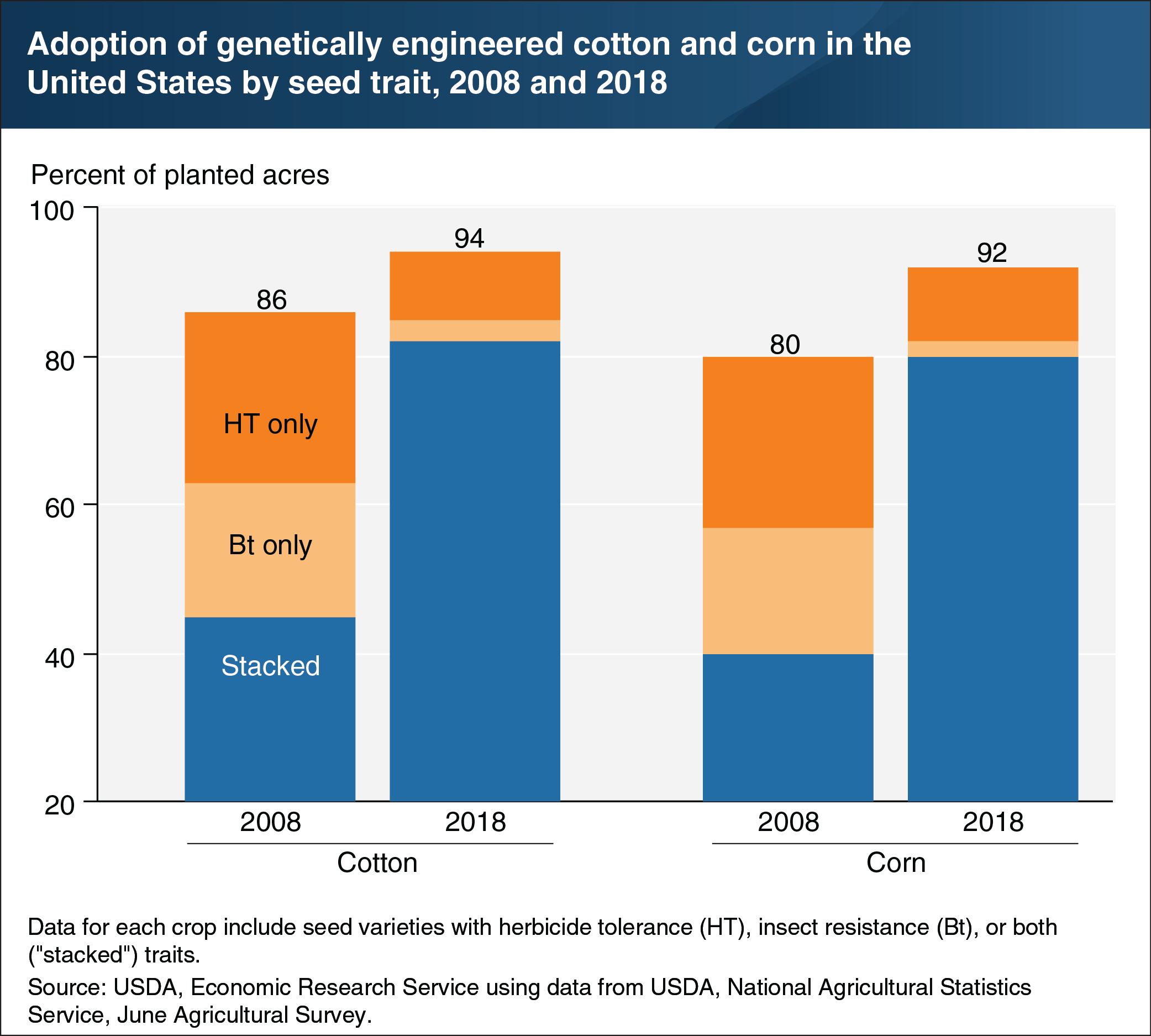Most U.S. corn and cotton acreage in 2018 used genetically engineered seeds with stacked traits
- by Seth J. Wechsler
- 7/20/2018

Currently, over 90 percent of corn, cotton, and soybean acreage in the United States is planted with genetically engineered (GE) seeds. Most of these GE seeds are either herbicide tolerant (HT) or insect resistant (Bt). Seeds that have both HT and Bt traits are referred to as “stacked.” A decade ago, 40 percent of U.S. corn acres and 45 percent of U.S. cotton acres were planted with stacked seeds. As of 2018, 80 percent of corn acres and 82 percent of cotton acres were planted with these varieties. Soybean seeds with stacked traits are currently not commercially available in the United States. Adoption rates for stacked seeds have slowed in recent years. Adoption rates for stacked corn seeds increased by 3 percentage points from 2017 to 2018, while rates for stacked cotton increased by only 2 percentage points. The slow growth rates for stacked seeds may be due to relatively low corn prices, or because the majority of GE seeds are already stacked. This chart is drawn from the ERS data product Adoption of Genetically Engineered Crops in the U.S., updated July 2018.

